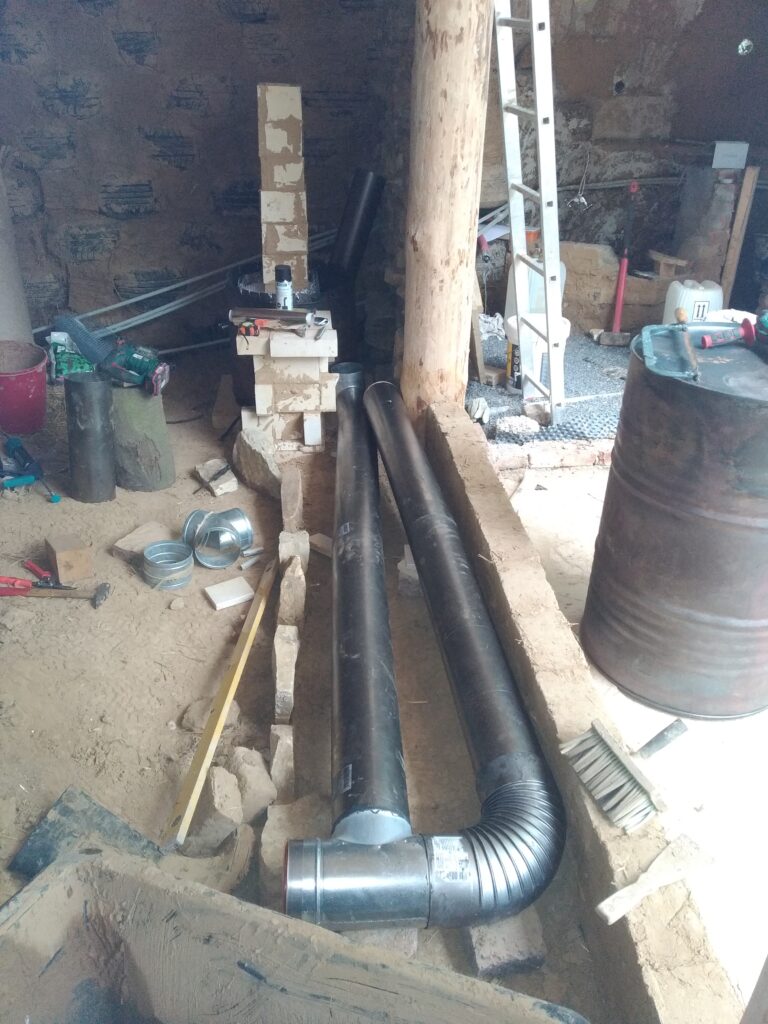In ensuring thermal comfort within our institute, the cornerstone lies in the construction of thick walls filled with soil, offering a substantial thermal accumulation element. The institute’s subterranean construction, inspired by the main concept of Michael Reynolds’ Earthship, leverages the energy from sunlight through its south-facing wall. This energy is accumulated within the walls, radiating heat during colder nights—a design ideal for New Mexico. In our Prague implementation, where sunlight is not as abundant during the day, and cold nights in the summer are not a concern, we still benefit from the walls’ accumulation capabilities, providing a significant heat inertia.
Throughout the summer, our chambers offer a comfortably cool climate. However, relying solely on sunlight for a comfortable temperature in winter would be unrealistic. Therefore, we have integrated an external heating source into our institute. We selected an option that aligns with the institute’s overall concept, prioritizing economical operation, ease of construction, cost-effectiveness, and a natural appearance.
The fundamental concept of the rocket mass heater involves rapid burning of wood fuel in the combustion chamber, with a portion of the heat emitted through the metal “bell” and the remainder stored within the heater’s mass. The clever design utilizes the heat siphon effect, where very hot smoke from the combustion chamber is cooled on the surface of the metal barrel. It is then drawn down to the chimney, which subtly inclines throughout the entire structure, allowing only the cooled smoke to exit the chimney.
The rocket mass heater, such as this, provides ample power to heat the entire institute. We find the main advantages to be its ease of operation (no need to open doors when loading logs), economical operation (less wood is needed in comparison with classical stove), and the satisfying (rocket) sound effect during operation. However, there are some drawbacks, including the absence of a direct visual sense of the fire, the need for special attention during ignition as the flames burn sideways, and the lack of direct access to the bottom of the burning chamber for ash removal (requiring the use of a chimney shovel from the top). In colder months, when the outside temperature hovers slightly bellow freezing point during the night, a few (2-5) hours of operation suffice to maintain the indoor temperature around 18°C. Achieving 21°C, however, demands considerably more effort, as there is no direct proportion between hours of operation and indoor temperature.
